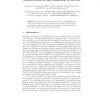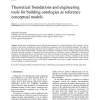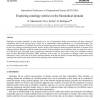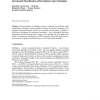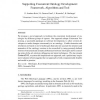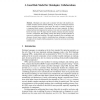121
Voted
SEMWEB
2011
Springer
14 years 3 months ago
2011
Springer
Alignments represent correspondences between entities of two ontologies. They are produced from the ontologies by ontology matchers. In order for matchers to exchange alignments an...
165
Voted
LPNMR
2011
Springer
14 years 3 months ago
2011
Springer
We present an approach to integrating rules and ontologies on the basis of the first-order stable model semantics defined by Ferraris, Lee and Lifschitz. We show that a few exist...
125
click to vote
DLOG
2011
14 years 4 months ago
2011
We show that deciding conjunctive query inseparability for OWL 2 QL ontologies is PSpace-hard and in ExpTime. We give polynomial-time (incomplete) algorithms and demonstrate by exp...
136
Voted
AO
2011
14 years 7 months ago
2011
While the Web Ontology Language (OWL) provides a mechanism to import ontologies, this mechanism is not always suitable. First, given the current state of editing tools and the iss...
155
Voted
SEMWEB
2010
Springer
2010
Springer
Theoretical foundations and engineering tools for building ontologies as reference conceptual models
14 years 7 months ago
Abstract. Perhaps the most fundamental notion underlying the desiderata for a successful Semantic Web is Semantic Interoperability. In this context, ontologies have been more and m...
143
Voted
PROCEDIA
2010
14 years 7 months ago
2010
Ontologies are gaining popularity in many domains as a way of representing, dealing and reasoning with large volumes of information, and they are starting to play a major role in ...
151
Voted
JAR
2010
14 years 7 months ago
2010
The development of ontologies involves continuous but relatively small modifications. However, existing ontology reasoners do not take advantage of the similarities between differe...
154
Voted
DKE
2011
14 years 7 months ago
2011
We propose a novel approach to facilitate the concurrent development of ontologies by different groups of experts. Our approach adapts Concurrent Versioning, a successful paradigm...
225
Voted
COGSR
2010
14 years 7 months ago
2010
Ontologies, as knowledge engineering tools, allow information to be modelled in ways resembling to those used by the human brain, and may be very useful in the context of personal...
105
click to vote
IJEIS
2010
14 years 10 months ago
2010
Abstract. Ontologies are today used to annotate web data with machine processable semantics and for domain modeling. As the use of ontologies increases and the ontologies themselve...


